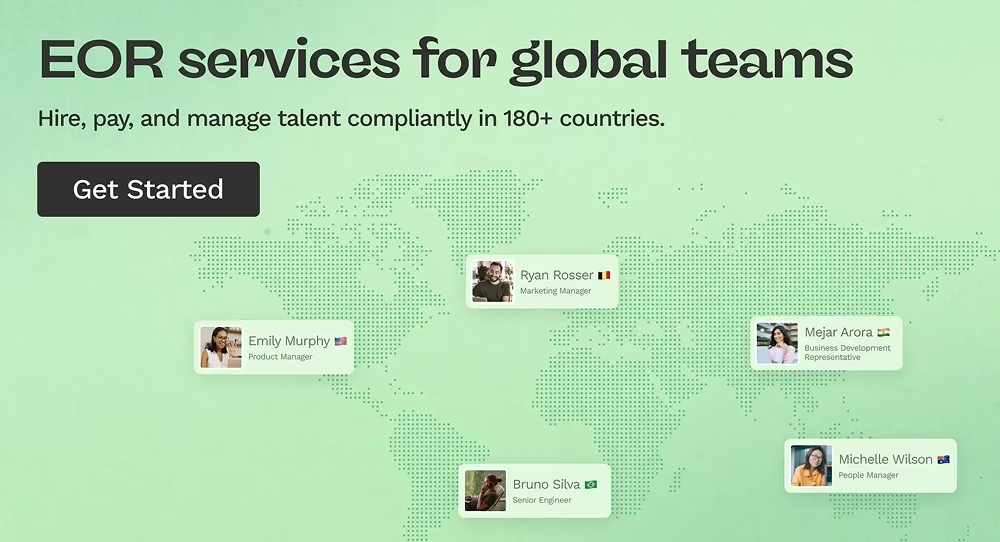Managing payroll, benefits, compliance, and other HR tasks often takes more time than business leaders expect. What starts as a few hours a week can quickly snowball, pulling you away from strategy, growth, and team development.
That’s why many companies turn to HR outsourcing models like professional employer organizations (PEOs) and administrative services organizations (ASOs) to lighten the administrative load. Both offer a helping hand with payroll and benefits administration, but they differ in fundamental ways.
In this guide, we’ll compare ASOs versus PEOs in detail to help you choose the best option for your business.
What is a professional employer organization (PEO)?
A professional employer organization (PEO) partners with companies through a co-employment model. In this arrangement, the PEO becomes a legal co-employer of your team members, handling payroll, benefits, and compliance. Your business also retains complete control over daily operations and staffing decisions.
The main advantage? You stay focused on your people and strategy while the PEO takes care of behind-the-scenes tasks like tax filings, workers' compensation coverage, and regulatory compliance. Working with a PEO also sometimes gives businesses access to benefits packages they might not qualify for, such as large-group health plans and retirement options.
When partnering with a PEO, your company must still register in each state or country where you have employees. You also remain responsible for meeting legal compliance requirements. PEOs typically file federal payroll taxes under their own EIN, but state-level tax reporting rules may differ depending on local regulations. That shared responsibility is the essence of co-employment: It’s collaborative but not hands-off.
What is a global professional employer organization (GPEO)?
While the name might sound like an international version of a PEO, global professional employer organization (GPEO) more closely resembles an employer of record (EOR). In this model, the GPEO—not your company—serves as the legal employer of the worker.
This distinction is key. A GPEO can hire on your behalf in countries where you don’t have a legal entity, taking full responsibility for payroll, taxes, and compliance. It’s a practical option for global expansion because it handles the entire employment lifecycle, from onboarding to offboarding, while your team manages day-to-day direction.
With built-in legal infrastructure, a GPEO simplifies international hiring and reduces the risks and costs associated with cross-border employment compliance. Some providers call this service an “international PEO,” but most operate as EORs. That’s the key difference from domestic PEOs, which rely on co-employment structures.
What is an administrative services organization (ASO)?
An administrative services organization (ASO) is an HR outsourcing partner that helps businesses manage specific administrative services, such as payroll processing, employee benefits administration, and compliance support.
Unlike a PEO, an ASO doesn’t use a co-employment model. Your company remains the sole legal employer and retains complete control over staffing and operational decisions. You use your employer identification number (EIN) for payroll tax reporting and are responsible for offering benefits, securing insurance, and complying with labor laws. While the ASO helps with these HR services, it assumes no legal or financial liability.
This model allows your business to offload time-consuming administrative tasks while remaining fully accountable for your team. ASOs are especially ideal for companies with in-house people operations teams that need support across specific stages of the employee life cycle.
How does a PEO operate?
A PEO shares employment responsibilities with the client business through a co-employment arrangement. As a co-employer, the PEO handles administrative functions like payroll and benefits while the business retains complete control over staffing, performance, and team culture. This setup frees your company from HR functions without requiring them to give up day-to-day oversight.
PEOs typically handle payroll processing, benefits administration, tax reporting under their own EIN, workers’ compensation, and risk management—HR services that can be costly or complex to oversee independently.
A common misconception about co-employment is that it means giving up control over your team. In reality, you remain in charge of all personnel decisions, including who to hire, how to manage performance, and when to offboard. The PEO’s role is limited to handling administrative tasks like payroll and compliance, not dictating how you run your business.
However, most PEOs only operate domestically. If you’re expanding across borders, a GPEO or EOR is probably a better fit.
How does an ASO operate?
An ASO works alongside your internal team to handle administrative tasks—without becoming a co-employer. Your business remains the legal employer, which means you’re responsible for all employment-related obligations like reporting wages and overseeing benefits
The ASO may assist with payroll, insurance paperwork, or compliance tracking, but your company still sponsors benefits, maintains insurance policies, and reports wages under your own EIN. You also retain fiduciary responsibility for all plans, meaning you’re legally accountable for selecting, managing, and monitoring employee benefits in the best interest of your team.
This setup gives you more control than a co-employment model. You stay fully responsible as the employer but get support with day-to-day operations. For companies that want to ease their administrative burden without giving up oversight, an ASO offers a flexible, collaborative solution.
Key differences between ASO and PEO
While both ASOs and PEOs assist with payroll, benefits, and other HR tasks, they differ significantly in how they operate and what responsibilities they assume. Here's how the two models compare:
Benefits of ASOs and PEOs
PEOs and ASOs help businesses simplify administrative tasks, but the value they offer depends on how much control you want to retain and the level of support you need. Here’s a closer look at what each model brings to the table:
Benefits of a PEO
- More time for growth: PEOs manage complex HR functions like payroll, benefits, and compliance, freeing internal teams to focus on strategy and scaling.
- Stronger benefits packages for employees: Because PEOs pool multiple clients together, they can often negotiate better insurance rates, giving your team access to high-quality benefits at a lower cost.
- Built-in with compliance support: PEOs provide expert guidance on labor laws, tax filings, and healthcare regulations, helping reduce your risk of errors and penalties.
- Support for employee management: Many PEOs support the entire employee life cycle and offer resources for onboarding, training, handbooks, performance reviews, and more.
Benefits of an ASO
- Tailored support for high-risk industries: ASOs don’t assume liability, which gives businesses in sectors like construction and manufacturing more flexibility in managing risk.
- Collaborative HR management: Your team stays in charge of employment decisions while the ASO takes on payroll, compliance paperwork, and benefits coordination.
- Access to negotiated benefits and insurance plans: While ASOs don’t sponsor benefits directly, they often help businesses manage relationships with insurance providers, which is especially helpful for larger organizations.
- Scalable, flexible: ASOs allow you to adjust the level of support as your needs evolve, which is ideal for growing companies that want to stay agile without committing to a bundled model.
Build your global team with Oyster
Choosing between a PEO and an ASO comes down to how much HR support you need and how much control you want. But many PEOs and ASOs operate domestically only, so if you're hiring across borders, an EOR may be the way to go.
EORs take on the legal, tax, and compliance responsibilities of employing international talent, so you don’t have to establish a foreign subsidiary or deal with the complexities of setting up local entities. It’s a faster, simpler way to grow your team globally.
As a global EOR, Oyster helps companies compliantly hire, pay, and manage employees in over 180 countries. Whether you’re entering a new market or scaling a distributed workforce, the all-in-one platform makes international hiring easy for teams of all sizes.
Learn how Oyster’s EOR solution allows you to grow and diversify your international team with ease.

About Oyster
Oyster is a global employment platform designed to enable visionary HR leaders to find, engage, pay, manage, develop, and take care of a thriving distributed workforce. Oyster lets growing companies give valued international team members the experience they deserve, without the usual headaches and expense.
Oyster enables hiring anywhere in the world—with reliable, compliant payroll, and great local benefits and perks.
.webp)



.webp)


.avif)


.webp)






